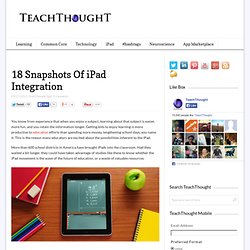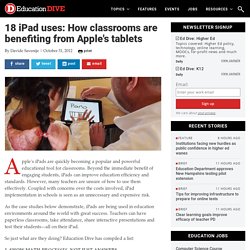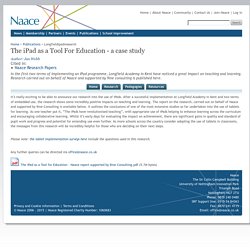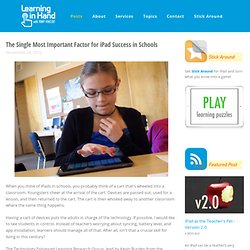

7 Key Findings for Successful Education Technology Integrations. Continuing with the theme of measurable successes in education technology implementations that we’ve explored in a number of articles over the last few months, today we take a look at Project Red.

Project RED conducted a national study of education technology focused on student achievement and financial implications. The coalition of three research organizations surveyed and studied nearly 1,000 schools and uncovered a replicable design for successfully introducing technology into the classroom, improving student performance, and yielding cost benefits. This exciting research endeavor developed 11 “success measures” and 22 independent measures and incorporated these into a survey tool that was central to the project’s effort to identify and prioritize the factors that make some U.S.
K-12 technology implementations perform dramatically better than others. Project Red’s research produced 7 key findings, summarized briefly below (check out the complete findings for further details). 18 Snapshots Of iPad Integration. You know from experience that when you enjoy a subject, learning about that subject is easier, more fun, and you retain the information longer.

Getting kids to enjoy learning is more productive to education efforts than spending more money, lengthening school days, you name it. This is the reason many educators are excited about the possibilities inherent to the iPad. More than 600 school districts in America have brought iPads into the classroom. Had they waited a bit longer, they could have taken advantage of studies like these to know whether the iPad movement is the wave of the future of education, or a waste of valuable resources. Motion Math in Class: An assistant professor of education at USC’s Rossier School oversaw this study looking at whether having students play a learning game to teach them fractions increased their knowledge.
Oklahoma State University iPad Pilot Program: OSU experimented with iPads in five classes in the fall of 2010. 18 iPad uses: How classrooms are benefiting from Apple's tablets. Apple's iPads are quickly becoming a popular and powerful educational tool for classrooms.

Beyond the immediate benefit of engaging students, iPads can improve education efficiency and standards. However, many teachers are unsure of how to use them effectively. Coupled with concerns over the costs involved, iPad implementation in schools is seen as an unnecessary and expensive risk. As the case studies below demonstrate, iPads are being used in education environments around the world with great success.
Teachers can have paperless classrooms, take attendance, share interactive presentations and test their students—all on their iPad. So just what are they doing? The iPad as a Tool For Education - a case study. In the first two terms of implementing an iPad programme, Longfield Academy in Kent have noticed a great impact on teaching and learning.

Research carried out on behalf of Naace and supported by 9ine consulting is published here. It’s really exciting to be able to announce our research into the use of iPads. After a successful implementation at Longfield Academy in Kent and two terms of embedded use, the research shows some incredibly positive impacts on teaching and learning. The report on the research, carried out on behalf of Naace and supported by 9ine Consulting is available below.
The Single Most Important Factor for iPad Success in Schools. When you think of iPads in schools, you probably think of a cart that's wheeled into a classroom.

Youngsters cheer at the arrival of the cart. Devices are passed out, used for a lesson, and then returned to the cart. The cart is then whisked away to another classroom where the same thing happens. Having a cart of devices puts the adults in charge of the technology. If possible, I would like to see students in control. The Technology Enhanced Learning Research Group, lead by Kevin Burden from the University of Hull, investigated the use of iPads at eight different schools in Scotland.
The researchers found that "personal 'ownership' of the device is seen as the single most important factor for successful use of this technology. " The study also found that teachers using iPads changed their approach to teaching. Not surprisingly, teachers and students want to continue to have access to iPads and are convinced that their use has changed learning for the better. schooltechnology.org.
5 Critical Mistakes Schools Make With iPads (And How To Correct Them)